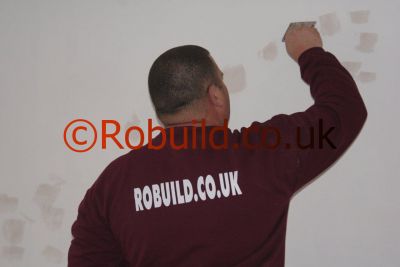Painting and decorating children – kids rooms and bedrooms
Walls have to be tough. A child expects more of a wall than an adult does and consequently the wall finish must be functional as well as decorative. A child will want to experiment with it. It is yet another surface against which he can try his toys— and his strength.

You may choose to paint the walls but the effectiveness of this depends very much on the type of paint you use. But whatever finish or colour you choose remember it must be lead-free—make absolutely sure of this by checking the label. High-gloss finishes are perhaps the easiest to wipe clean but many people these days find them the least attractive of all the types on the market. Also, if your child needs a regular nightlight, the reflection can be disturbing, even frightening.
Polyurethane paints are renowned for their toughness, and are virtually child-proof. The old stand-by, emulsion paint, is still cheap—temptingly so if you persuade yourself that a child’s room will need almost constant redecoration. It will work out more expensive in the end than one treatment in a superior grade of polyurethane, particularly as emulsions are much harder to clean and keep clean than.tougher surfaces. Conventional wallpaper has obvious drawbacks— it can be ripped only too easily— but the newer vinyl wall-coverings have many advantages.
They are notably washable, stain-resistant and are available in the brightest colours and an increasing range of attractive patterns. They are also often textured, which provides harmless interest for the child’s inquisitive fingers. Pegboard, which first became popular in schools, has now earned its place in ordinary domestic use. It both protects and enhances walls, and is certainly a useful addition to any playroom. It is more adaptable than blackboard which will undoubtedly be ‘outgrown’, but pegboard is always acceptable. In the early years you can pin up ‘educational’ pictures or alphabets—then the child’s own schoolwork or paintings. And it will still be useful later, as a display surface for teenagers’ posters. Pegboard is also a fairly good insulating material and, mercifully, slightly sound-deadening.
If, when the child has become a sophisticated teenager, he will want his walls covered with smarter, more expensive tongued-and-grooved wood panelling, then you will find that the pegboard will be easy to remove and will have contributed to keeping the walls’ surfaces in good repair.
